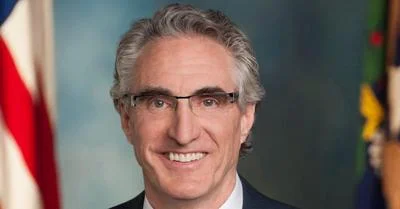As part of the Obama Administration's effort to cut climate-changing carbon emissions produced by the nation's buildings and manufacturing plants, today the U.S. Department of Energy (DOE) recognized General Mills, one of the world’s leading food companies, for its leadership in pursuing energy savings through innovative technologies as demonstrated in its Cedar Rapids, Iowa plant. Through the Energy Department's Better Plants Challenge, General Mills has committed to 20 percent energy savings over 10 years in 25 manufacturing plants across the country. Altogether, the improvements at the Cedar Rapids plant are expected to save General Mills more than $4 million per year in energy costs, reducing the plant's total energy bill by more than a third.
"DOE is partnering with industry to improve energy efficiency in the industrial sector to make U.S. manufacturing more competitive and reduce carbon emissions while also creating jobs and saving consumers money," said Dr. Lynn Orr, Under Secretary for Science and Energy at DOE, who visited the plant today. "The General Mills plant in Cedar Rapids is an example of the extraordinary potential the American food industry has in finding and achieving energy and cost savings."
In just two years, General Mills has reduced energy intensity by 6 percent across its 25 U.S.-based plants through DOE's Better Plants Challenge. Its Better Plants showcase project-the Cedar Rapids plant-saves 23 percent in energy use annually, taking about $4.3 million out of the cost of making the cereals, fruit snacks, and frosting produced there.
"As one of the largest food companies in the world, we can make a huge difference in the sustainability of our operations and the carbon footprint of our plants," said General Mills' Cedar Rapids plant manager Rue Patel. "The Better Plants Challenge has given us the motivation to push forward with our energy savings goals, as well as a forum to share with other industrial partners best practices on the technology and innovations that have worked well for us."
General Mills has attained substantial energy savings through a comprehensive heat recovery project in combination with other efforts including boiler efficiency improvements, lighting retrofits and greater combustion efficiency. The heat recovery project uses "free" waste heat at multiple stages to heat water used for preparing ingredients and to reduce dehumidification costs. The plant also employs a flash steam system that powers equipment needed to keep packaging dry.
The company is evaluating similar heat recovery projects at 14 other sites, which could lead to additional annual savings of about $2 million across the company. The heat recovery project is also reducing water consumption by 2.2 million gallons per year and preventing the release of approximately 5,500 tons of carbon dioxide emissions from the Cedar Rapids site each year.
General Mills operates facilities in more than 100 countries and six continents. With more than 41,000 employees, the company produces 100+ food and snack brands available to consumers around the world including Cheerios, Yoplait, Nature Valley, FiberOne, Green Giant and more.
As a cornerstone of the President's Climate Action Plan, the Better Buildings, Better Plants Challenge is the industrial component of the Better Buildings Challenge and is aimed at achieving the goal of doubling American energy productivity by 2030 while motivating corporate and public-sector leaders across the country to save energy through commitments and investments. More than 250 organizations are partnering with the Energy Department through the Better Buildings Challenge to achieve 20 percent portfolio-wide energy savings and share successful strategies that maximize efficiency over the next decade. Across the country, partners have shared energy data for more than 32,000 properties and are reporting energy savings of 20 percent or more at 4,500 properties and 10 percent or more at 12,000 properties.
Learn more about Better Buildings Challenge partner results, showcase projects and innovative solutions being shared with others at http://betterbuildingssolutioncenter.energy.gov/. And check out our recent report highlighting the $2.4 billion saved by Better Plants Partners to date.
Source: U.S. Dept. of Energy, Office of Energy Efficiency & Renewable Energy









